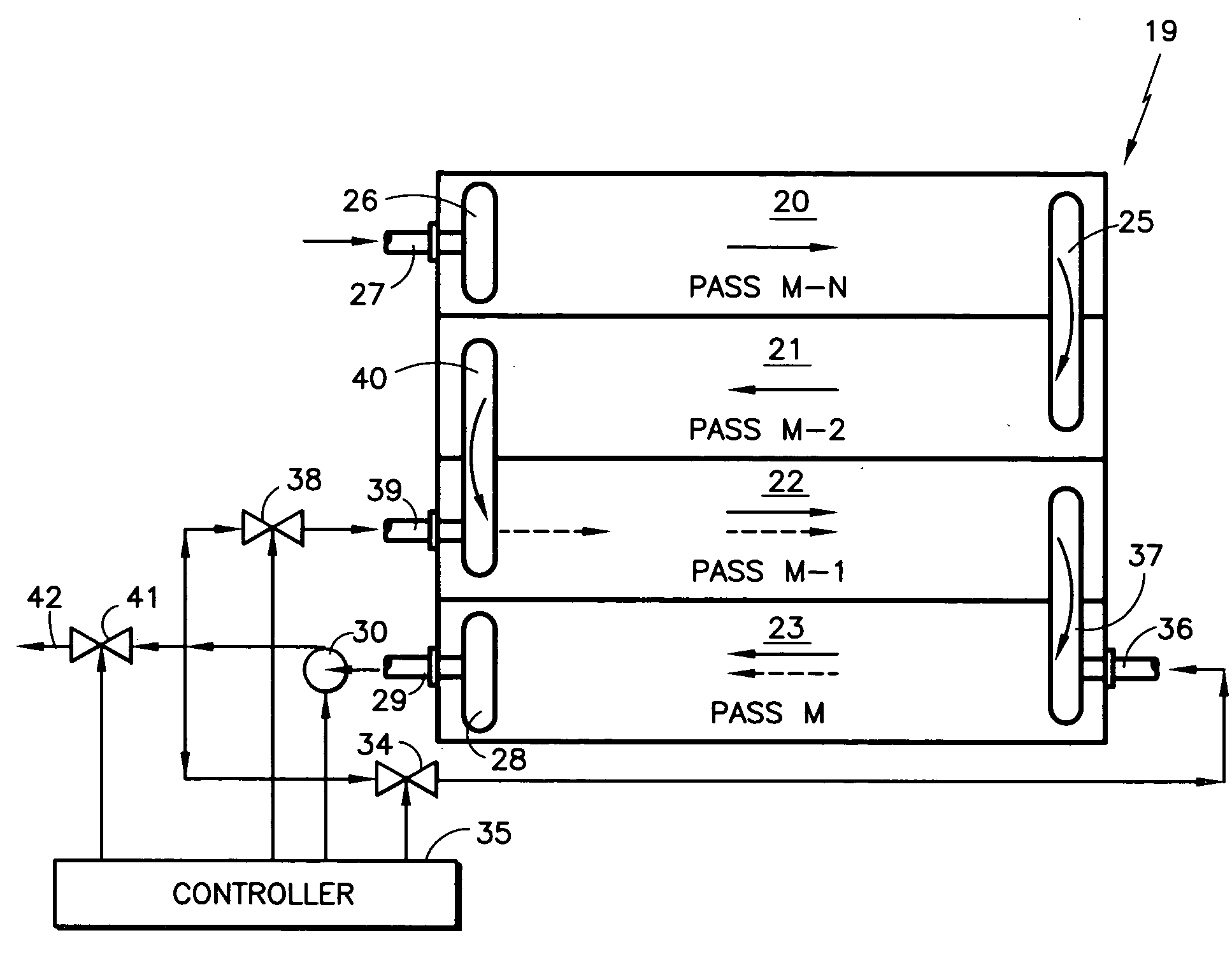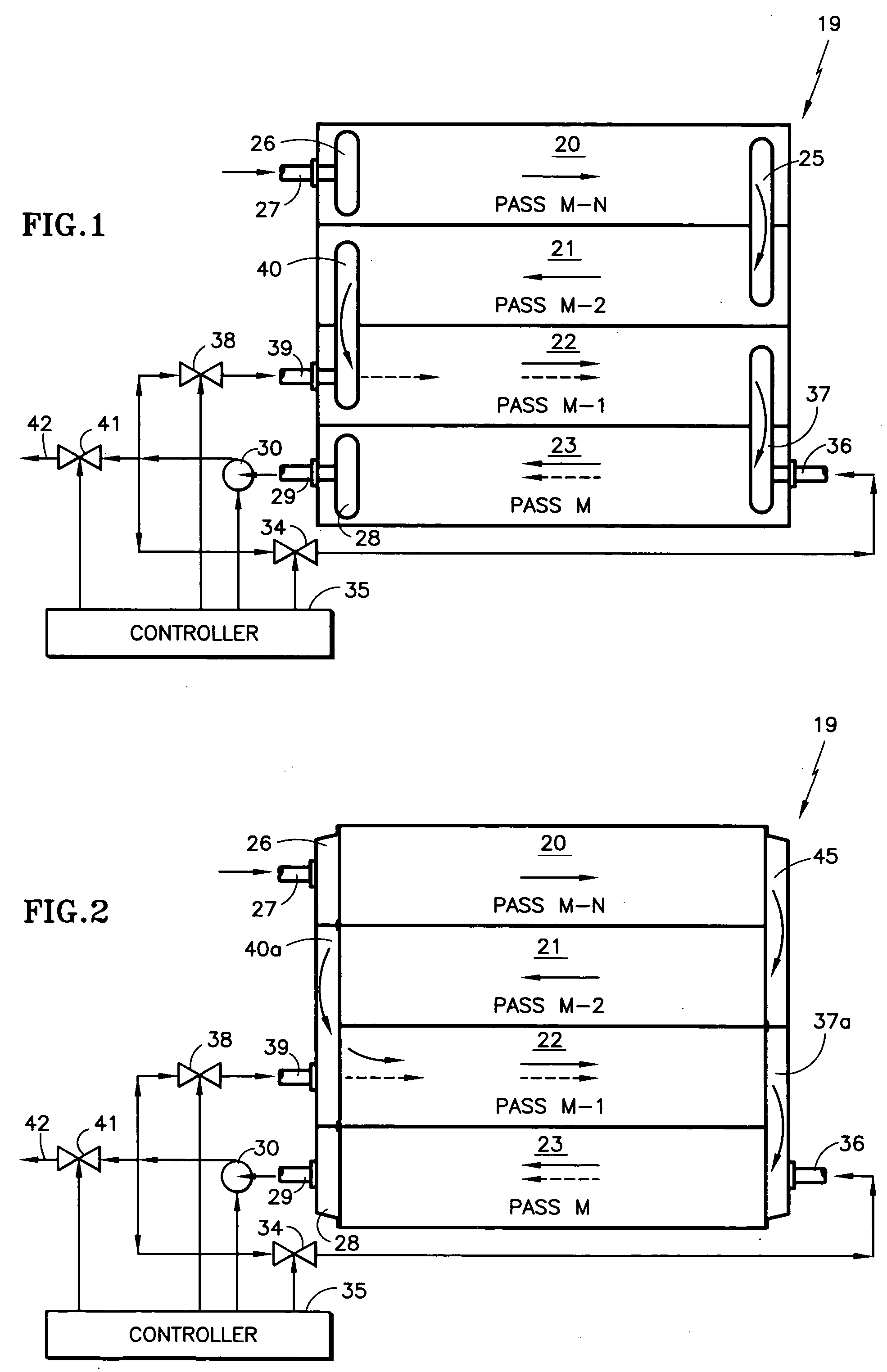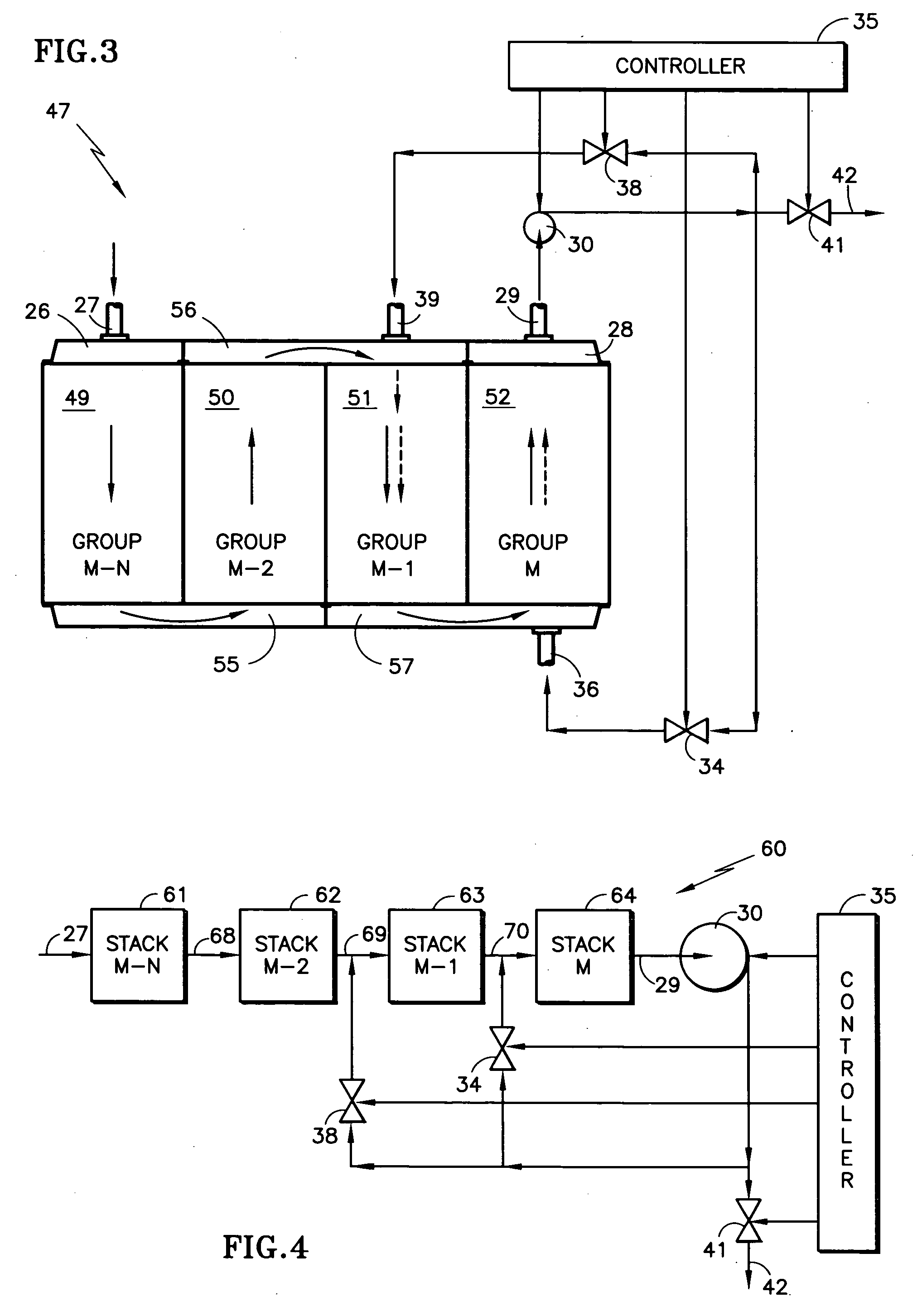Fuel cell system having inlet fuel to more than one and/or recycle to less than all of the fuel fields
a fuel cell and system technology, applied in the field of fuel cell power plants, can solve the problems of high pressure drop, difficult pumping of fuel, and added costs, and achieve the effects of improving fuel utilization, reducing pressure fuel recycling, and improving fuel utilization
- Summary
- Abstract
- Description
- Claims
- Application Information
AI Technical Summary
Benefits of technology
Problems solved by technology
Method used
Image
Examples
Embodiment Construction
[0029] Referring to FIG. 1, a fuel cell power plant 19 comprises a plurality of fuel cells (only one is shown), each having fuel flow channels arranged in a series of M fuel flow fields 20-23 which comprise pass M−N through pass M, the fuel flow channels of each pass 20-22 except the last pass 23 being fed to the next pass 21-23 in the series. The transition 25 between flow field 20 and flow field 21 is an internal turn manifold. Fuel is received at an internal fuel inlet manifold 26 from a fuel supply pipe 27, and the exhaust of the fuel cell stack 19 passes through an internal fuel exit manifold 28 and pipe 29 to a fuel recycle impeller 30. The output of the fuel recycle impeller 30 is fed through a first valve 34 in response to a controller 35 to a bypass inlet pipe 36 and internal manifold 37 to the last pass 23 of the fuel cell stack, as well as through a valve 38 and a bypass inlet pipe 39 and internal manifold 40 to the −1 pass 22 of the fuel cell stack. Some portion of the e...
PUM
 Login to View More
Login to View More Abstract
Description
Claims
Application Information
 Login to View More
Login to View More - R&D
- Intellectual Property
- Life Sciences
- Materials
- Tech Scout
- Unparalleled Data Quality
- Higher Quality Content
- 60% Fewer Hallucinations
Browse by: Latest US Patents, China's latest patents, Technical Efficacy Thesaurus, Application Domain, Technology Topic, Popular Technical Reports.
© 2025 PatSnap. All rights reserved.Legal|Privacy policy|Modern Slavery Act Transparency Statement|Sitemap|About US| Contact US: help@patsnap.com



